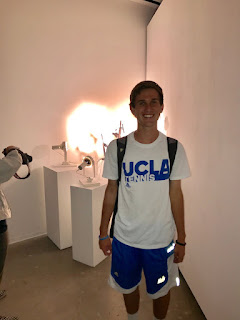Weel 4 - Medicine + Technology + Art
Week 4 - Medicine + Technology + Art I never thought about medicine and technology as being art before, however, after studying the material this week, I realize that medical practitioners are actually artists. They are constantly studying and staying ahead of the latest trends and innovations in their particular speciality. Plastic surgeons are artists and their work involves beautifying people on the outside. Other types of surgeons perform their craft on the inside of bodies and while their work cannot be seen from the outside, a patient can benefit from their work on the inside. In Orlan’s documentary, she creates “carnal art” by undergoing several plastic surgeries on her own body to demonstrate her beauty. While I understand this is a form of art, I was quite uncomfortable watching the film because it pushed the boundaries of art. Too much plastic surgery can lead to too much transformation Another example of medicine and technol...
